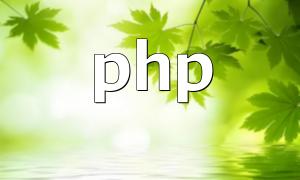In modern web development, effectively combining Flask with PHP is an important approach to improving application performance and user experience. Flask, a lightweight Python web framework, is ideal for quickly developing small applications, while PHP is a widely used server-side scripting language. Understanding the basics of both is key to achieving efficient integration.
RESTful APIs serve as a common bridge to connect Flask and PHP. By building API endpoints with Flask, the PHP side can send HTTP requests to retrieve data or submit forms, enabling flexible data exchange.
$curl = curl_init();
curl_setopt_array($curl, array(
CURLOPT_URL => "http://localhost:5000/api/v1/resource",
CURLOPT_RETURNTRANSFER => true,
CURLOPT_ENCODING => "",
CURLOPT_MAXREDIRS => 10,
CURLOPT_TIMEOUT => 30,
CURLOPT_HTTP_VERSION => CURL_HTTP_VERSION_1_1,
CURLOPT_CUSTOMREQUEST => "GET",
));
$response = curl_exec($curl);
$err = curl_error($curl);
curl_close($curl);
if ($err) {
echo "cURL Error #:" . $err;
} else {
echo $response;
}
?>Another effective method of integration is sharing a common database. Both Flask and PHP can access the same database to perform read and write operations. Ensuring compatibility of the database schema helps avoid common issues during interaction.
$servername = "localhost";
$username = "username";
$password = "password";
$dbname = "myDB";
$conn = new mysqli($servername, $username, $password, $dbname);
if ($conn->connect_error) {
die("Connection failed: " . $conn->connect_error);
}
$sql = "SELECT * FROM Users";
$result = $conn->query($sql);
if ($result->num_rows > 0) {
while($row = $result->fetch_assoc()) {
echo "id: " . $row["id"] . " - Name: " . $row["name"];
}
} else {
echo "0 results";
}
$conn->close();
?>Security is a critical aspect when implementing interaction between Flask and PHP. It is recommended to use HTTPS during API calls to ensure encrypted data transmission. Additionally, implementing authentication mechanisms such as OAuth helps restrict access and protect the interfaces.
Several strategies can be adopted to enhance integration performance:
Reduce the frequency of API requests by merging calls to lower server load.
Use caching technologies like Memcached or Redis to speed up data retrieval.
Implement data pagination to avoid performance bottlenecks caused by large data responses.
By using RESTful APIs and shared databases, the combination of Flask and PHP can leverage the strengths of both to help developers create efficient and stable web applications. Prioritizing security and performance optimization is key to successful integration. We hope this guide provides practical insights to assist in your development projects.









